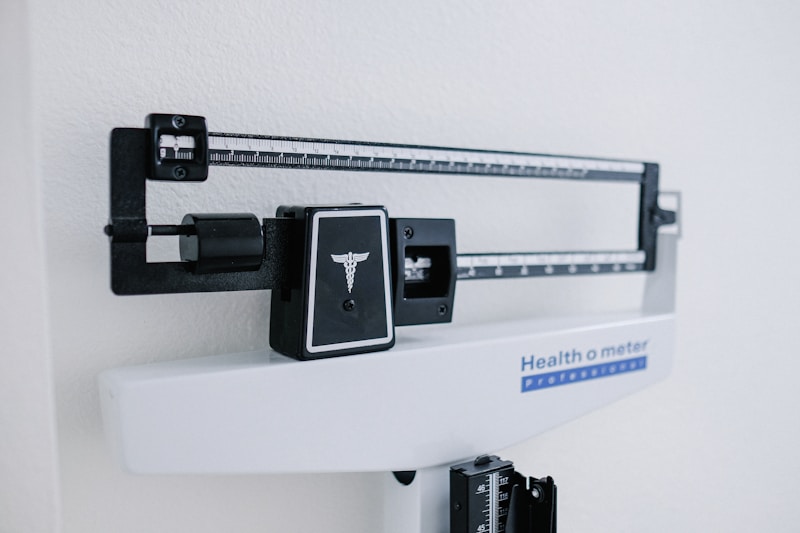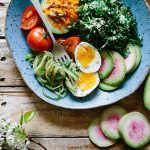You want to increase your flexibility, get rid of an old injury or achieve a yoga posture you’ve struggled with? What you eat can make a difference. Here are 9 ways food can improve your yoga practice or any other physical activity:
1. Happy joints and flexibility
Flexibility relates to the range of movement in your joints and the length of your muscles. The key to increasing flexibility is through proper warm-ups and stretching techniques. However, what you eat can play a vital role. Collagen, antioxidants and omega-3 are three power-hitters you’ll want to make friends with.
- Collagen
Don’t fall for any supplement. Supplements with collagen do not work. When ingested, collagen is broken down by the acids in your stomach, which prohibit it from being absorbed as a whole. Rather, Vitamin C and proteins will help build up collagen in your body. You need at least 60mg of Vitamin C every day. Instead of reaching for oranges, try veggies that contain even greater doses:
- A cup of kale contains 80.4mg
- ½ cup of chili contains 107.8mg
- 1 cup of bell pepper contains 190mg
- 1 cup of broccoli up to 132mg
- Antioxidants
Catechin is a natural antioxidant present in green tea that has been observed to reduce inflammation and may reduce cartilage breakdown.
- Omega-3
The fatty acid omega-3 is widely found in fatty fish and some seeds and oils, such as chia and linseed. Omega-3 will help with stiffness and joint pain.
2. The pitfalls of juice
Fruit juice, even completely natural ones, can dramatically increase your levels of blood glucose. These sudden increases of glucose can eventually bring your energy levels crashing down. To avoid these sugar crashes and enjoy sustained energy, opt for the whole fruit instead of going for the juice. Juice drinking deprives you of the fibre and many of the natural nutrients found in fruits.
3. Refined carbohydrates vs. whole grain
Refined carbs, like white bread, white pasta or white rice, can provide a fast source of energy that disappears as quickly as it arrived, leaving a sensation of drowsiness and a crave for further carbohydrates. Instead, choose whole grain carbohydrates such as brown bread, whole wheat pasta and whole grain rice to prolong your energy and concentration.
4. Timing
It’s not just what you eat, but when you eat. The timing of your food can be key to improve your practice, health and wellbeing.
- Before yoga class
Eating too close to your practice can affect your digestion and make your stomach ache. It is recommended that you practice yoga on empty stomach. This means not eating 4-5 hours before practice; a light snack is optional 2-3 hours before. To learn more about what and how to fuel your body before class check: Eat Like a Yogi: Top Tips to Fuel Your Body Before Class
- After yoga class
After a yoga practice the first two hours are golden. It is when your body is most receptive to nutrient absorption. Fruits and plenty of water right after the practice are ideal while you prepare your next meal. To learn more about what and how to fuel your body before class check: Rest and Recovery: What to Eat after Yoga Class.
5. The downside of caffeine and sugar
Although rich in antioxidants, coffee drinking can deplete you of energy. Dehydration and adrenal gland stimulation, which are in charge of stress regulation, are some of the consequences of heavy coffee drinking. Likewise too much sugar, in the form of pastries, cakes and other snacks, can alter your energy and focus . Instead of coffee or sugary drinks, go for carbonated water or whole fruit.
6. Muscle repair
Water and specific foods can help reduce soreness and help repair muscle micro-tears that can occur when stretching. Dark coloured fruit such as blueberries and cherries can reduce muscle soreness and may help you regain your strength due to their high content of anthocyanins which facilitates the oxygen rate into your muscles. Due to the content of L-citrulline, watermelon also helps reduce muscle soreness.
7. Iron and breath
Over-elevated or low levels of iron can affect the way you grow, develop and function. Iron is an essential mineral for your breath. With low iron levels, deep breathing becomes a challenge. Once you eat an iron rich food, such dark green leafy vegetables or pulses, iron is absorbed in your small intestine and transported into your bloodstream with the help of two proteins: transferrin and ceruloplasmin. These proteins transport iron to all the tissues in your body, vital organs, bone marrow and the brain, so that DNA synthesis and red blood cell production can occur. Without the appropriate production of red blood cells, oxygen cannot be transported throughout your body.
How much do you need?
| Men | Women |
| 8.7mg (19-64 years) | 14.8mg (before menopause) |
| 8.7mg (after menopause) |
8. Electrolytes
Electrolytes, such as sodium and potassium, help maintain fluid balance in your cells by pulling in water. Having a low intake of potassium can lead to muscle cramps as you exercise. Hydration keeps your heart rate from climbing too high, which, in turn, helps regulate your body temperature. To maintain your hydration level, remember to stay hydrated even before you feel the signal of thirst from your body. To avoid muscle cramps, maintain a diet rich in vegetables and fruit from which your body will absorb potassium.
9. Anti-inflammatory foods
Our immune systems are constantly poised to attack anything that could potential harm: pollen, foreign chemicals, bacteria or viruses. When they go on the attack, inflammation is the by-product, which works to protect our health. However, inflammatory diseases, or a shut-down of the immune system, can also occur. An example of this is rheumatoid arthritis. In these cases, diet can be a great support. Ginger, turmeric, pineapple are great ways to reduce inflammation.
In sum, focusing on physical postures is just the tip of the iceberg. Watching what you eat, when you eat, and being mindful of how and when to hydrate the body is key. Your body is your instrument, and by fine-tuning what goes into your body, your instrument will play more beautifully!













